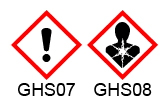As a global importer and distributor of monoethylene glycol (MEG) with CAS number 107-21-1, we supply the industry with fibre and technical grade by ship, rail and road in bulk from our tank farm in Antwerp. With large tank capacities, we are your strong and flexible partner for the highest quality in product and service as well as attractive prices. (Mono)ethylene glycol (MEG, trivial name glycol) is the simplest divalent alcohol with the chemical name ethane-1,2-diol.
AVAILABLE QUALITIES
Fibre quality (>99.9% purity)
Technical quality (>99.5% purity)
From third country (import) duty paid (T2) and duty unpaid (T1)
EU originating goods
Product details
General
CAS number
107-21-1
EC number
203-473-3
Index number
603-027-00-1
HVL REACH
01-2119456816-28-0173
Other names
Ethane-1,2-diol
Ethylene glycol (EC)
Ethanediol
1,2-Dihydroxyethane
1,2-Ethanediol
Glycol
Sum formula
C2H6O2
Hazard pictograms

Hazard warnings
H302 Harmful if swallowed.
H373 May cause damage to the kidneys through prolonged or repeated exposure. Exposure route: Ingestion
Safety instructions
P260 Do not breathe dust/fume/gas/mist/vapour/aerosol.
P264 Wash hands thoroughly after use.
P270 Do not eat, drink or smoke when using.
P301+P312 If swallowed: Call poison information centre/doctor.
P330 Rinse mouth.
P314 If you feel unwell seek medical advice/attention.
Emergency number
+49 (0) 761 19240 (Poisoning Information Centre Freiburg)
Usage
Today, monoethylene glycol is mainly used for the production of polyester fibres and polyethylene terephthalate (PET). Most radiator antifreeze for internal combustion engines and many heat transfer fluids are based on monoethylene glycol. This also applies to our Frigutec® engine coolant products. In addition, monoethylene glycol is also used in natural gas production. Other areas of application are: Textile treatment products, dyes, laboratory chemicals, detergents and cleaners, polishes, adhesives and sealants, hydraulic fluids, resins, and many more.
Physical and chemical properties
Aggregate state
Liquid
Colour
Colourless
Odour
Odourless
pH value (50 vol. % aqueous solution)
6,5 – 7,5
Melting point/freezing point
-13 °C
Boiling point
197 °C
Flash point
111 °C
Vapour pressure at 25°C
0,123 hPa
Density at 20°C
1,11 g/cm³
Viscosity, dynamic at 25°C
16,1 mPas
We would be pleased to inform you personally about the further physical and chemical properties of our glycols. We look forward to your enquiry.
Transport information
No dangerous goods.
UN number
Not applicable
Transport hazard class
Not applicable
Packaging group
Not applicable
related products
ANY QUESTIONS? GET IN TOUCH WITH US!
Haven’t found the information you were looking for? No problem! Call us or send us an email regarding your inquiry. We´re glad to help.

